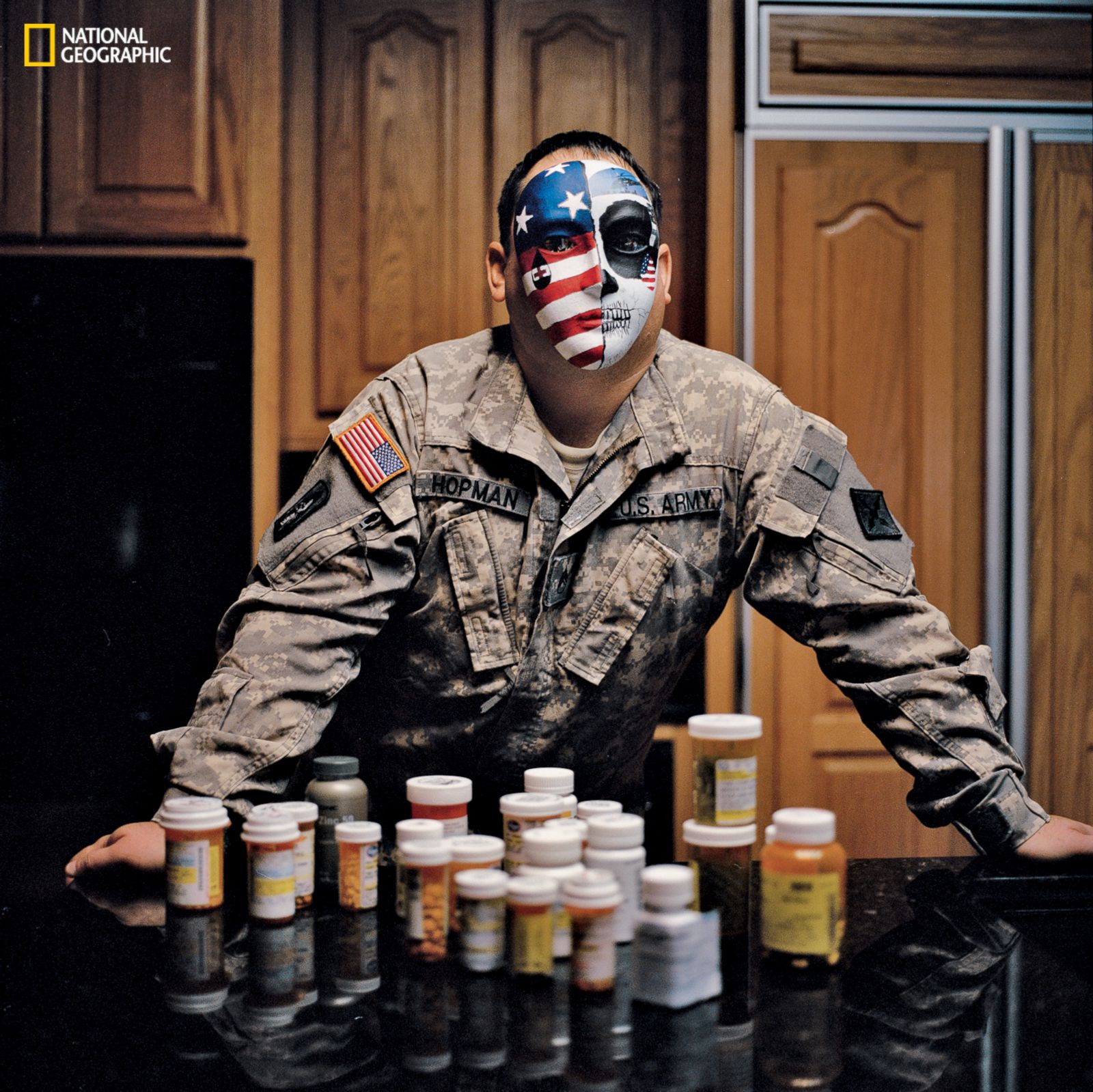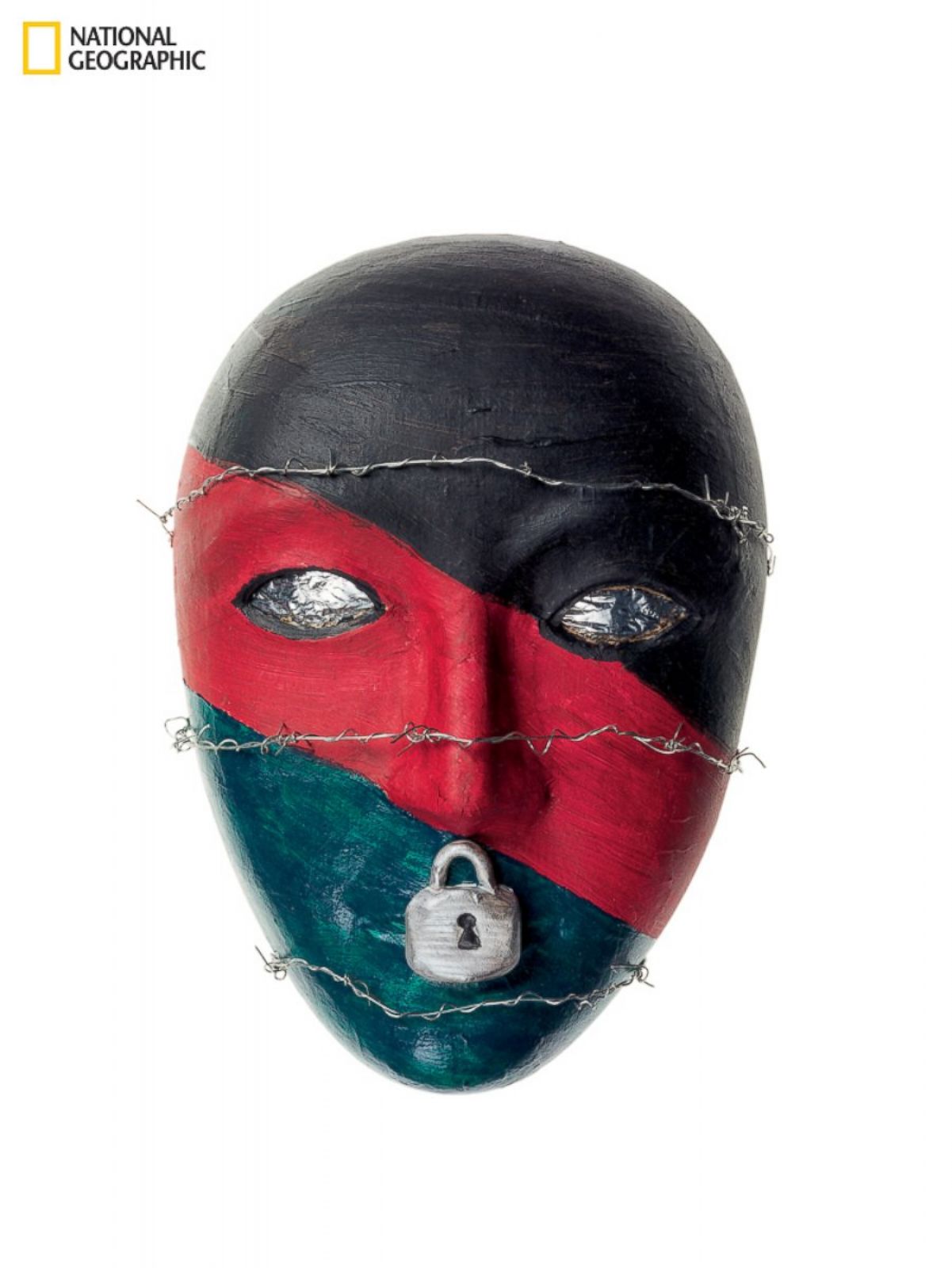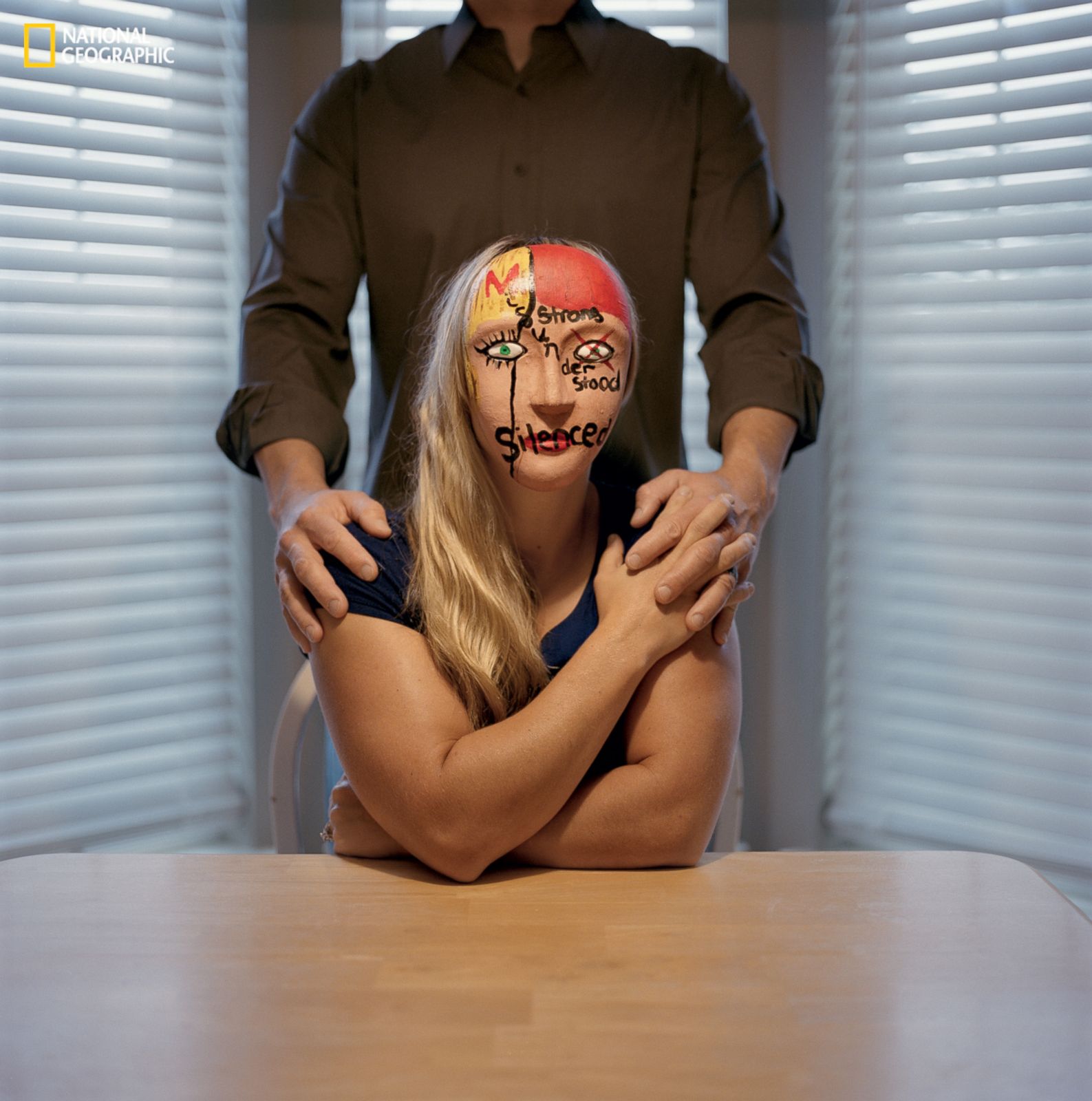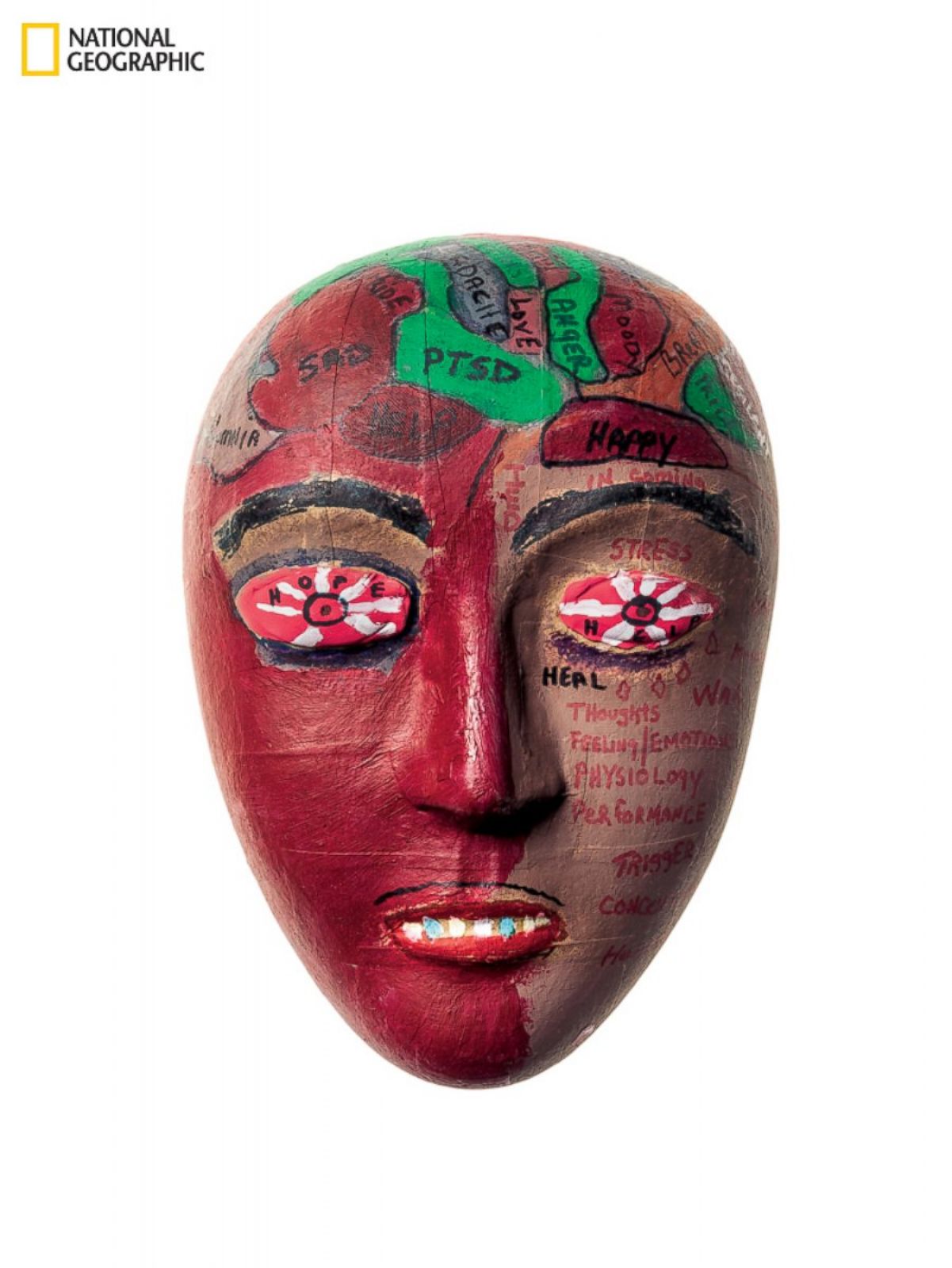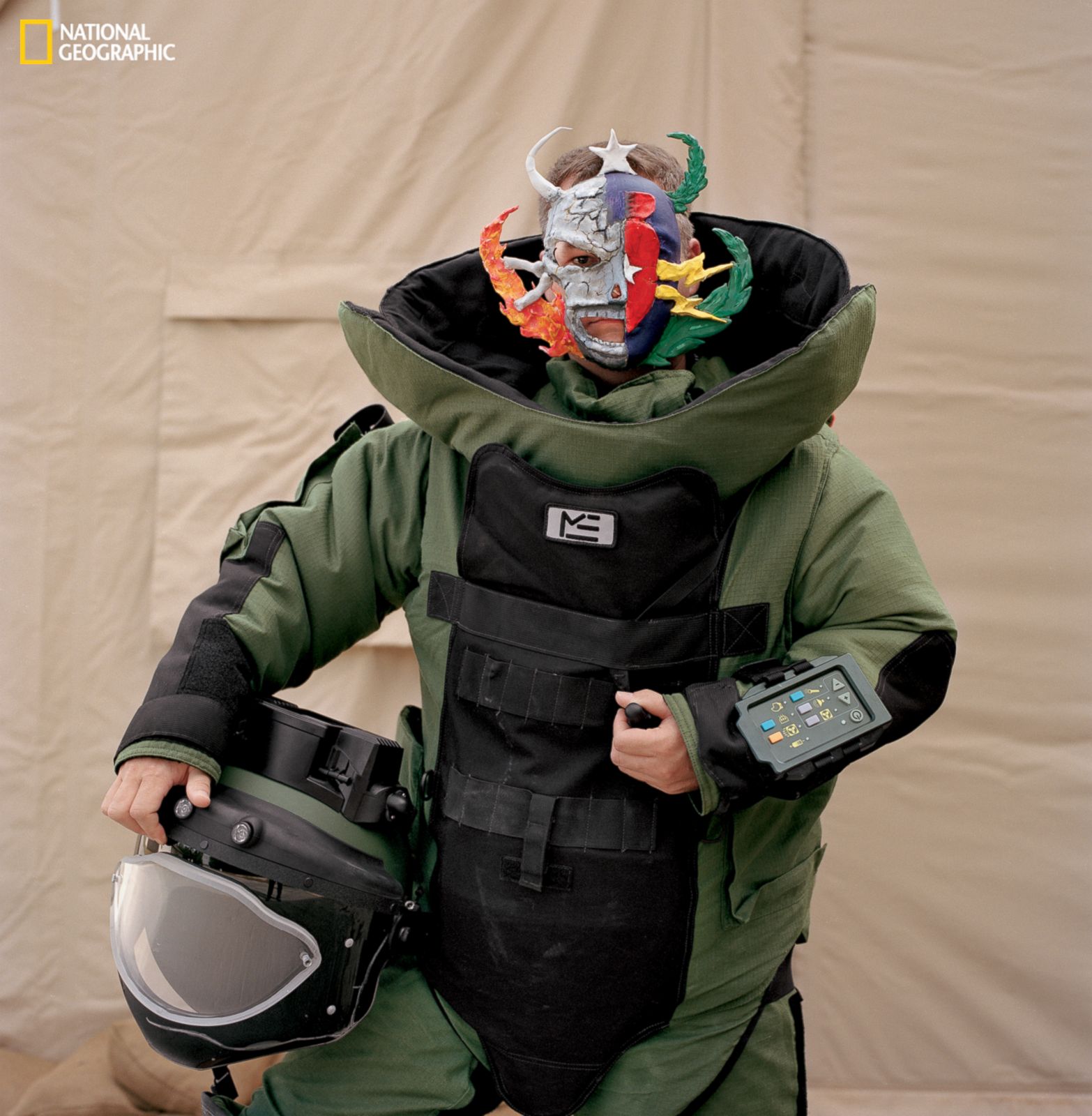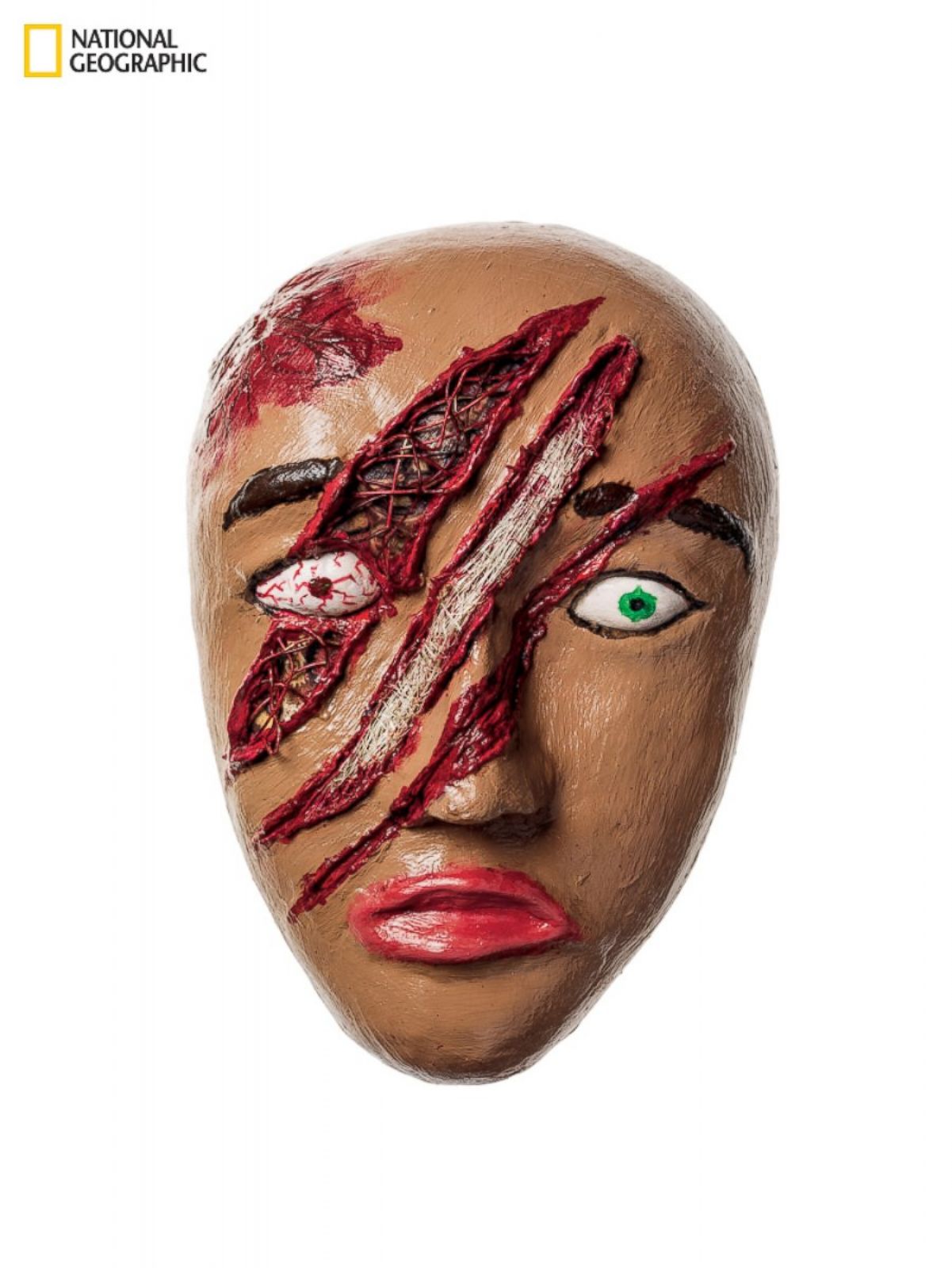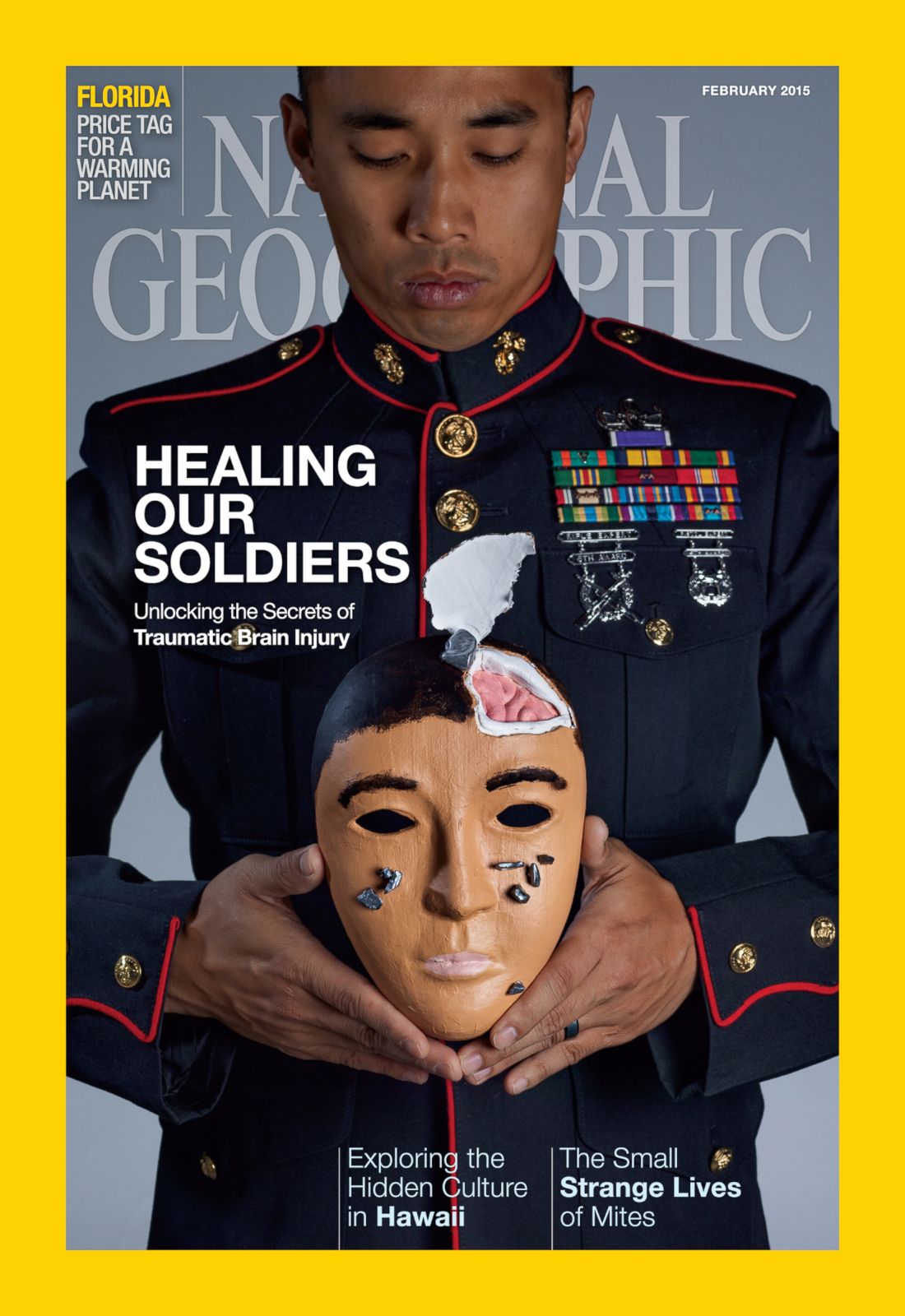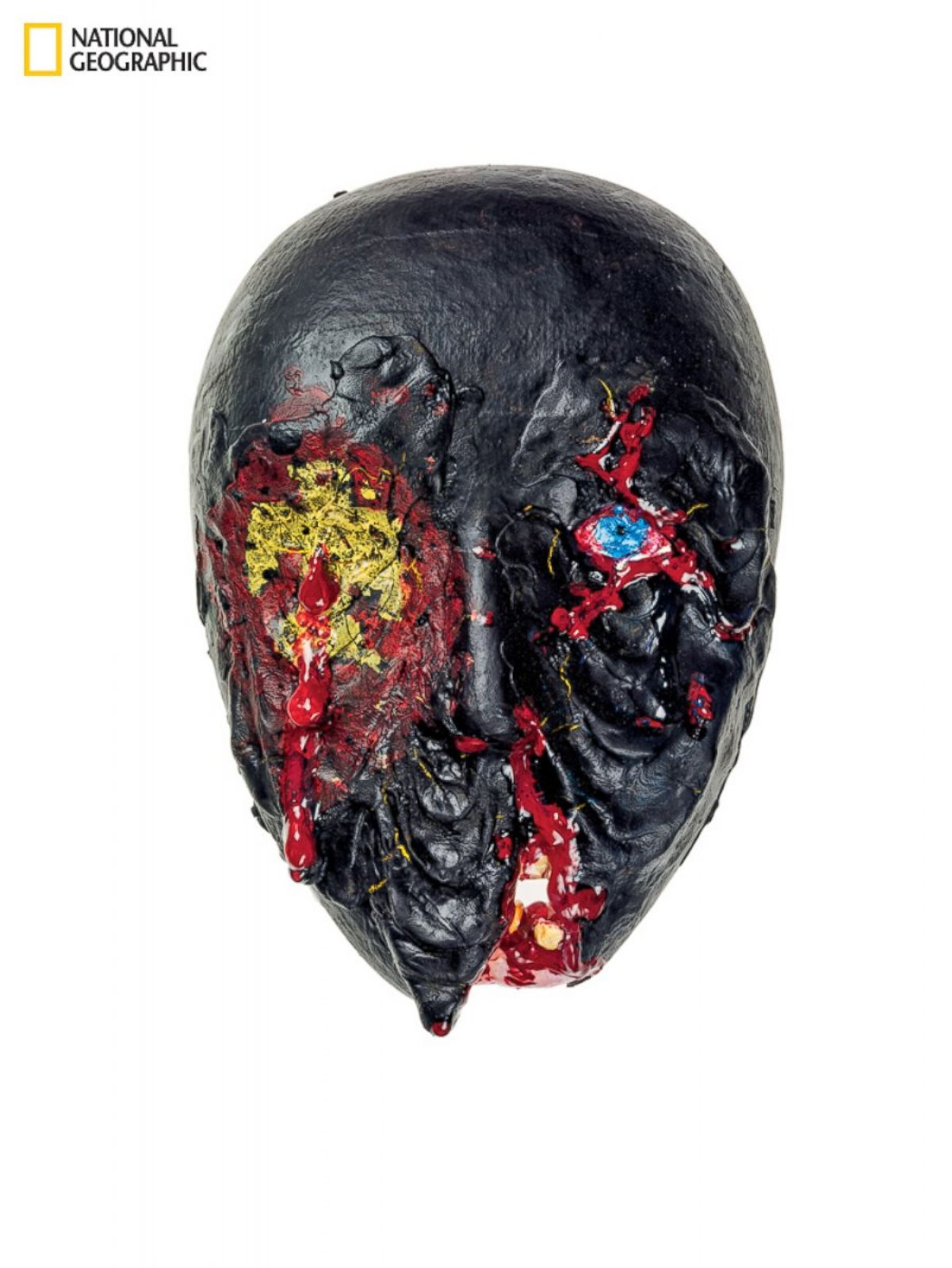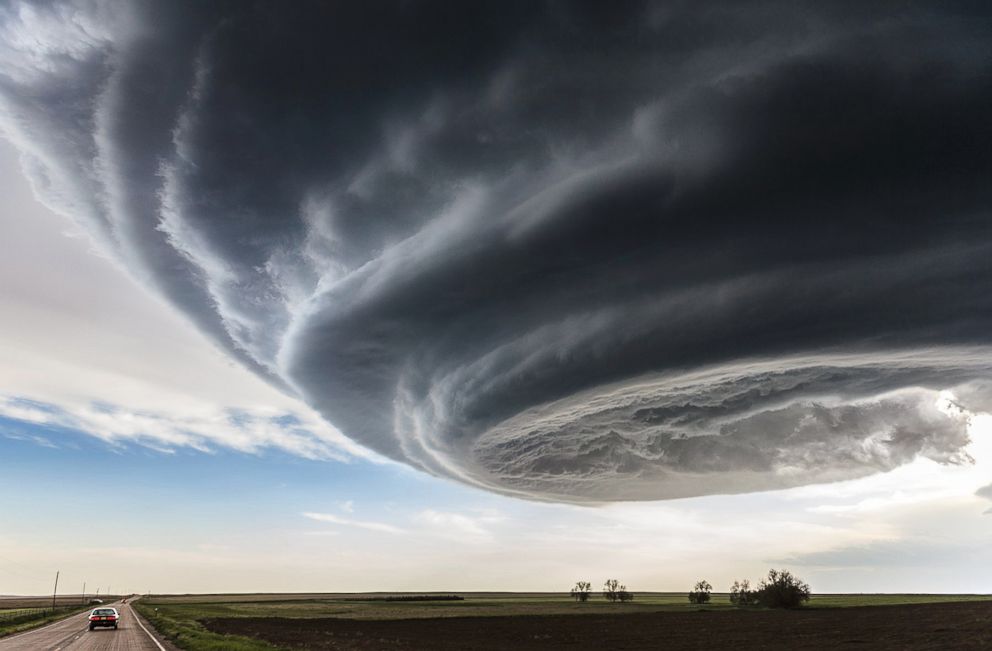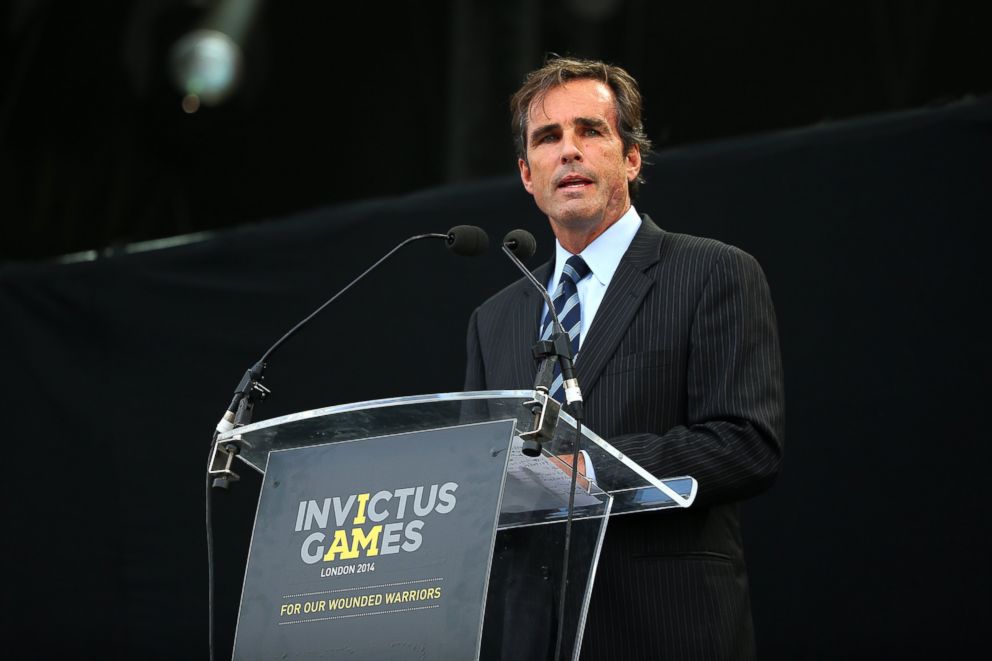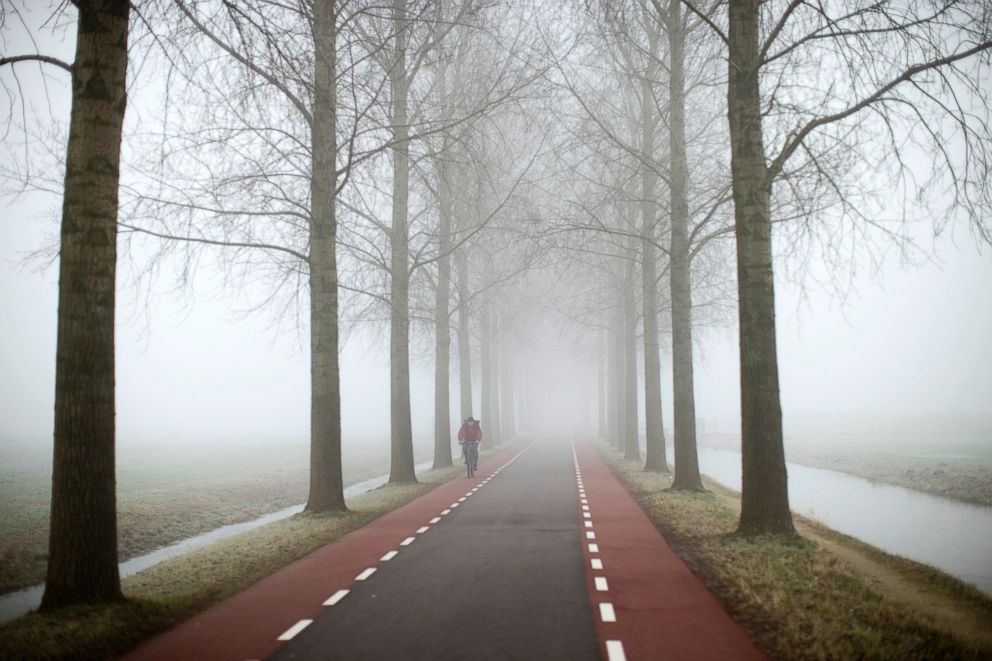Brain Injured Veterans Use Masks to Communicate
1 of 10
"Healing Our Soldiers" images are from the February, 2015 issue of National Geographic magazine. Army Staff Sgt. Perry Hopman, who served in Iraq from 2006-2008, confronts the battery of medications he takes daily for blast-force injuries he sustained while treating soldiers as a flight medic. "I know my name, but I don't know the man who used to back up that name."
